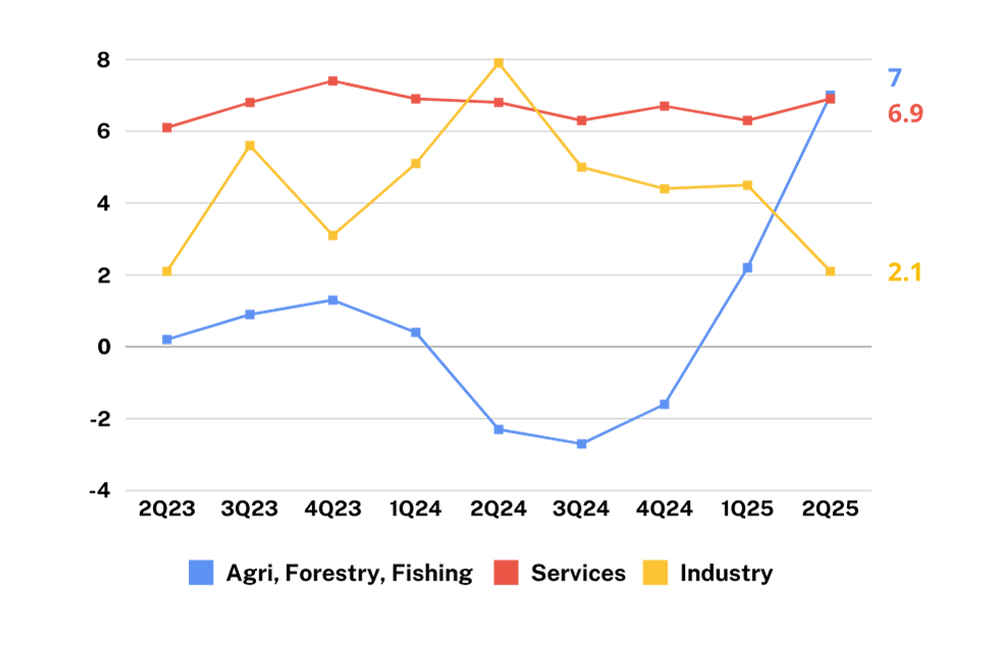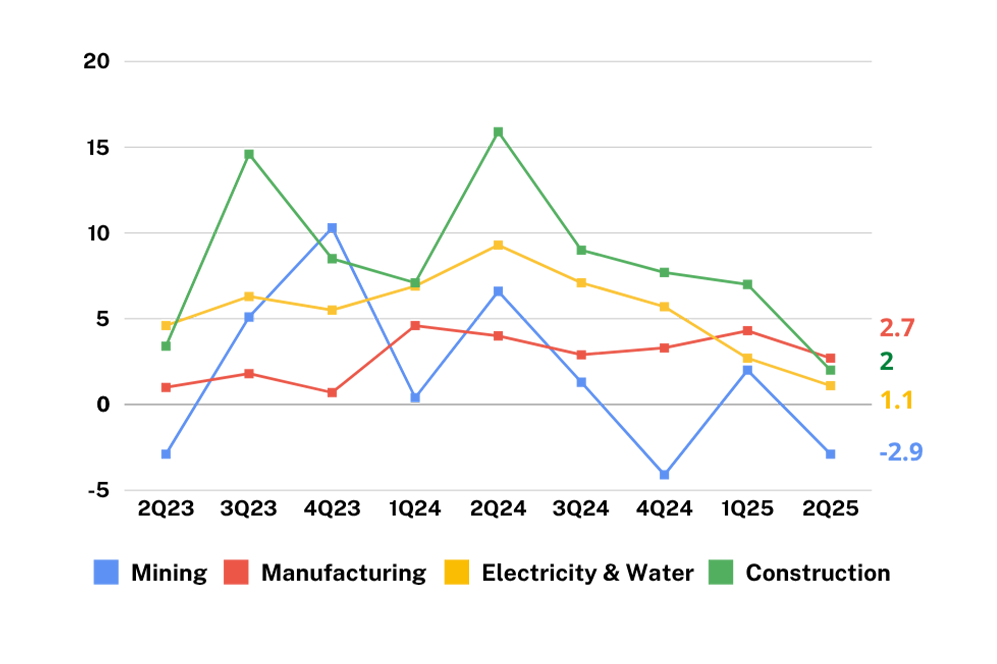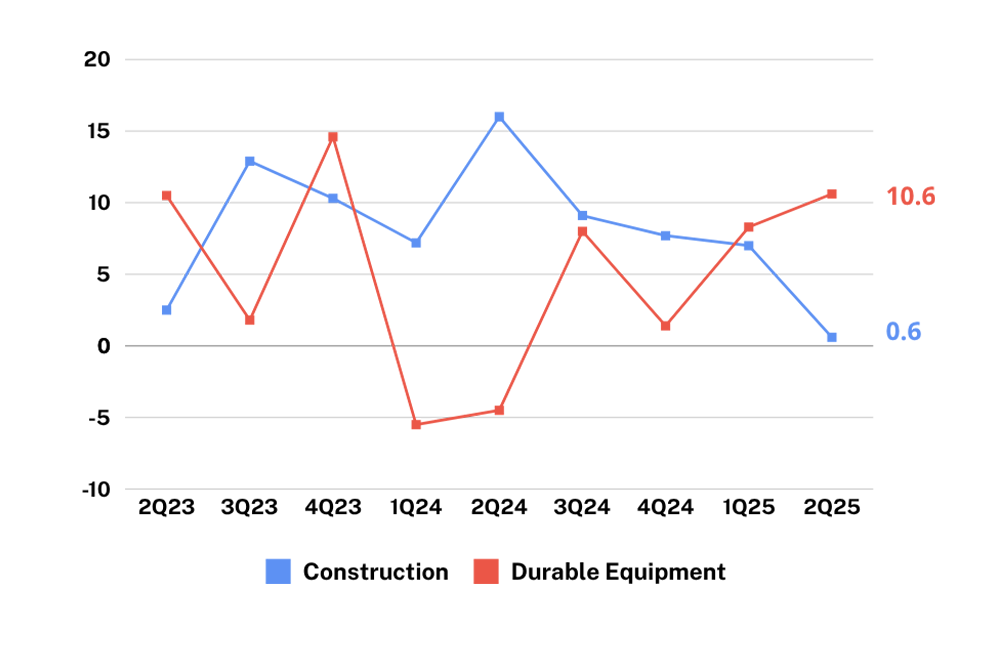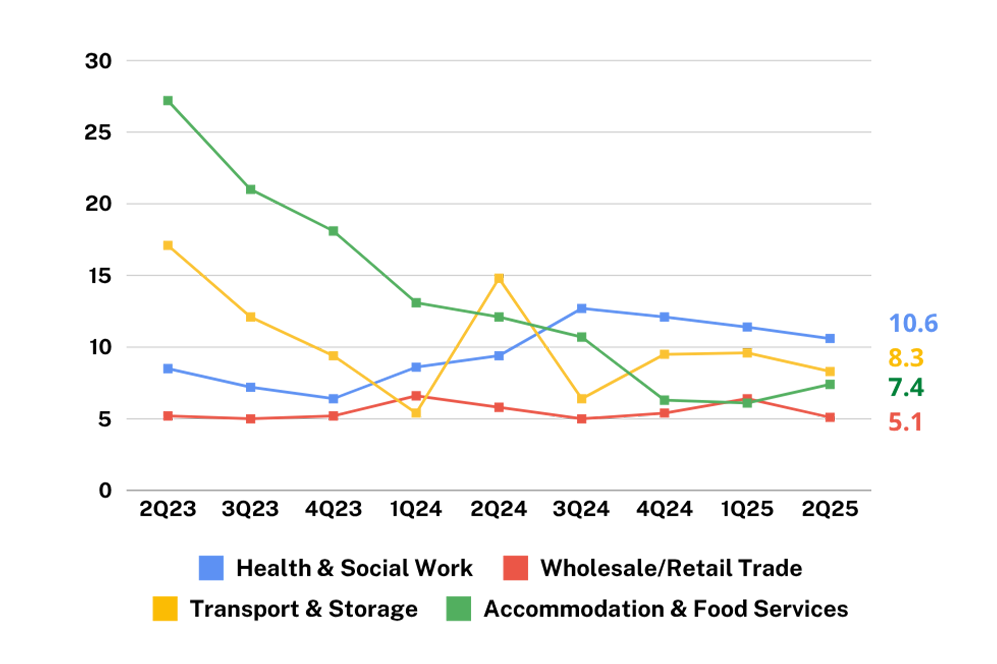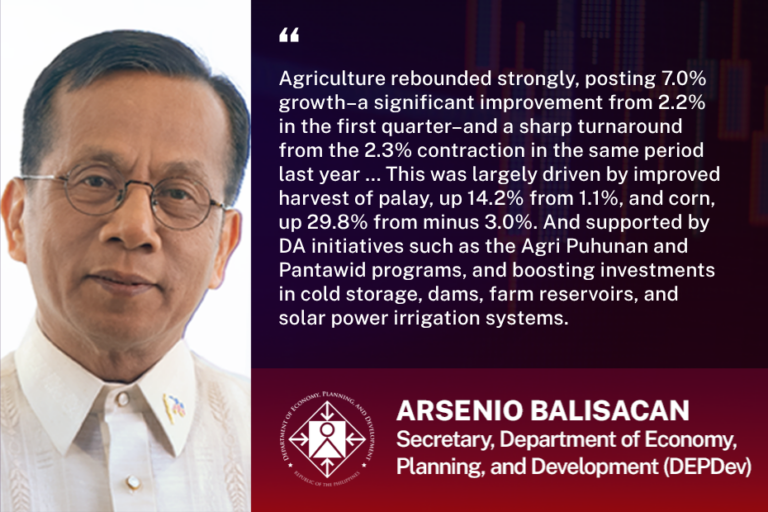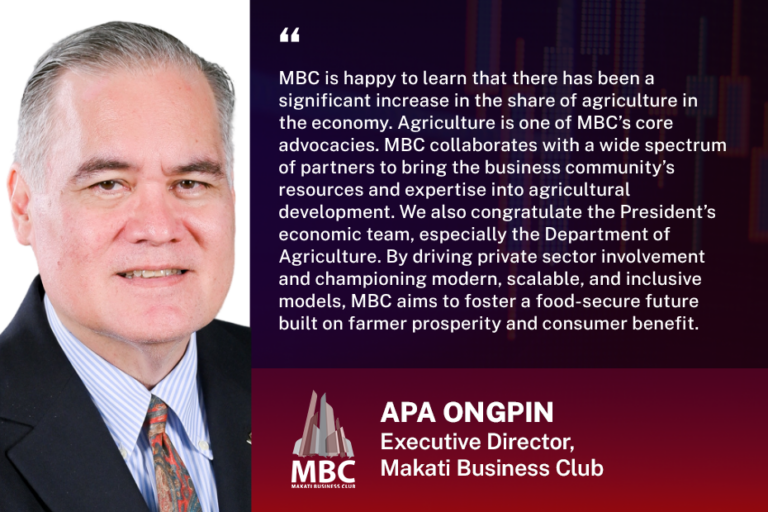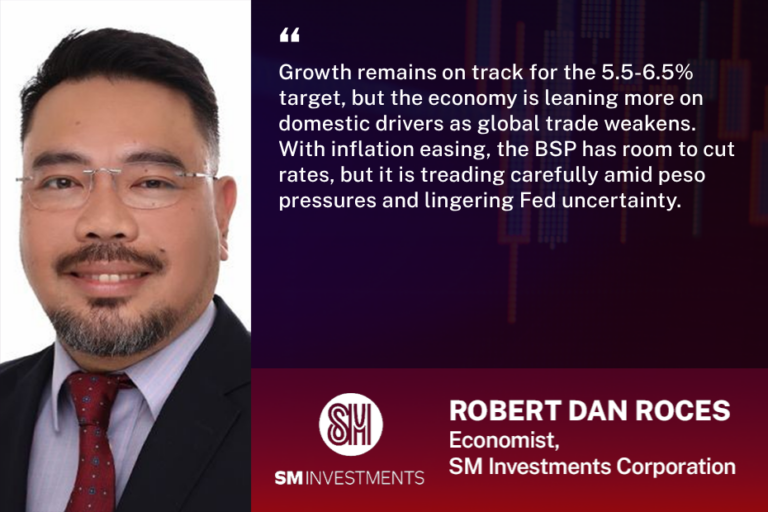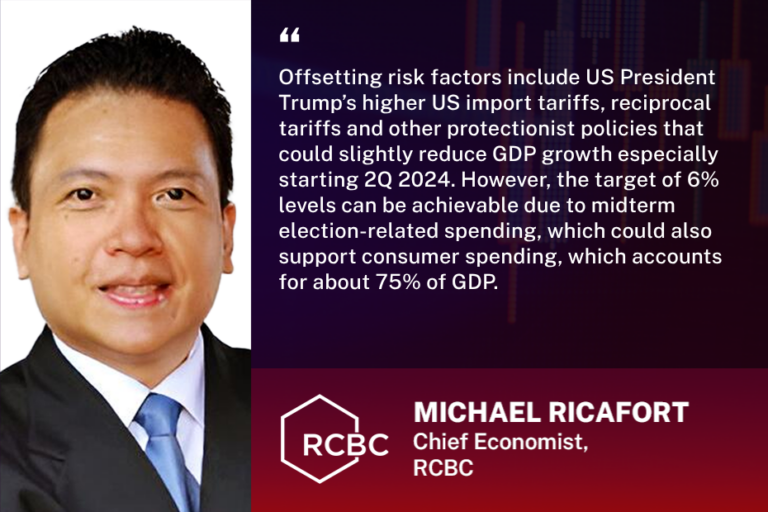PH ECONOMY MEETS GOVERNMENT TARGET OF 5.5% IN Q2 2025, AGRICULTURE GROWS BY 7.0%, FROM 2.2% LAST QUARTER

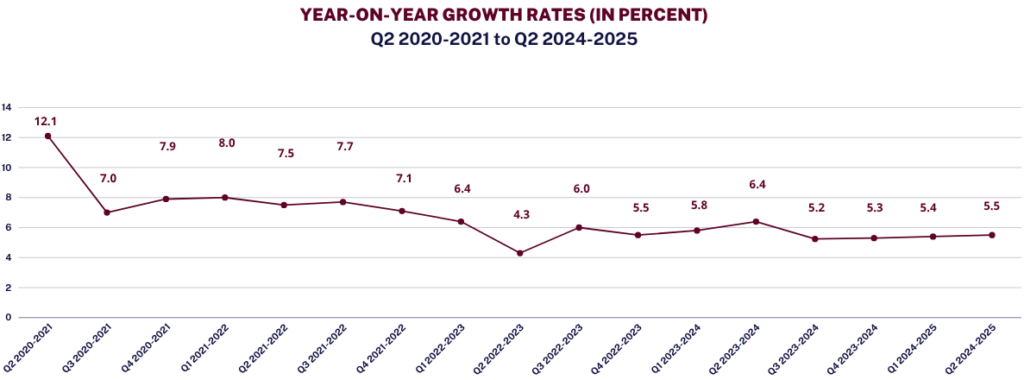
07 August 2025 — The Philippine economy grew by 5.5% in the second quarter of 2025, slightly higher than the 5.4% recorded in Q1 but below the 6.4% growth posted in the same period last year. This performance aligns with the median forecast of local economists at 5.5% but is at the lower end of the government’s revised 5.5-6.5% full-year growth target. DEPDev Secretary Arsenio Balisacan remains confident that the country can achieve the target in the remaining half of the year. While the modest acceleration from the previous quarter suggests resilience, the slower year-on-year pace reflects the lingering impact of both global and domestic headwinds.
On the demand side, Household Consumption expanded to 5.5%, up from 5.3% in Q1, driven by easing inflation that improved consumer confidence. Government Spending rose by 8.7%, significantly down from the 18.7% surge in Q1. This slowdown was largely driven by the Commission on Elections’ 45-day ban on public works spending in the recent elections. Investment, measured via gross capital formation, edged up by just 0.6% compared to 4.8% in the previous quarter, indicating increased caution from the private sector amid external risks – including the announcement of U.S.-imposed tariffs on Philippine exports and ongoing global supply chain disruptions. Exports and imports grew by 4.4% and 2.9%, respectively, showing a modest recovery in trade.
On the supply side, the Services sector expanded by 6.9%, mostly driven by robust consumer demand and continued expansion in finance, healthcare, and IT-related services. Industry grew by 2.1%, supported by stable activity in manufacturing and construction. The standout performer, however, was Agriculture, which posted a significant 7% growth from 2.2% in the previous quarter – its strongest showing in recent years. According to Sec. Balisacan initiatives of the Department of Agriculture such as the Agri Puhunan and Pantawid programs as well as boosting investments in cold storage, dams, farm reservoirs, and solar power irrigation systems have also contributed to the growth of the sector. This rebound offers a bright spot in a sector typically beset by structural challenges.
DEPDev Secretary Balisacan noted that increased global uncertainty through US President Trump’s tariff announcements has affected the country’s economic performance due to rising uncertainty in the global economy. According to Sec. Balisacan: “(It’s) the end of the series of announcements (on tariffs) we hope there will be no further destabilization in the expectations in the global economy, the trade uncertainty, it’s affected not only Philippine exports but the trade of many other countries as well.” The initial round increased the initial tariffs for the Philippines from 17% to 20%. After PBBM’s trip to the US for negotiations, they agreed on a deal which resulted in a reduction of 1% on tariffs (20 to 19%) while the Philippines gave the US zero tariffs for a limited number of products like cars, soya, wheat and pharmaceuticals. Frederick Go, Special Assistant to the President for Investment and Economic Affairs, says that the US will still pay tariffs on corn, pork, poultry, fish, sugar, rice and other farm products. Some countries were able to negotiate better tariff rates with the US. Vietnam managed to lower tariffs to 20% from 46% while Indonesia managed to lower tariffs to 19% from 32%. Many have raised concerns that the 19% tariff will remove our advantage over Vietnam and Indonesia when it comes to attracting foreign investments from supply chain relocation and diversion
Growth in %
Insights from Key Economists
Co-presented by MBC's official Economy Partner

Share MBC's GDP Insights on Social Media
MBC Economy Dashboard
The Makati Business Club (MBC) pilots its Economy Dashboard and provides a snapshot of key socio-economic data to help executives and policymakers make better decisions in today’s fast-changing economy.
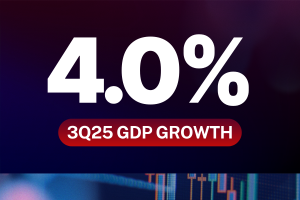
PH Economy Slows to 4% in Q3 2025 from 5.5% Last Quarter, Falling Below Government Target – Lowest Quarterly Growth since 2023
PH Economy Slows to 4% in Q3 2025 from 5.5% Last Quarter, Falling Below Government Target – Lowest Quarterly Growth since 2023 07 November 2025
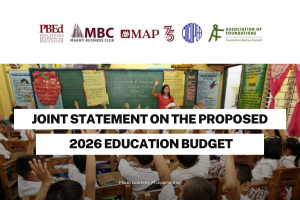
Joint Statement on the Proposed 2026 Education Budget
Joint Statement on the Proposed 2026 Education Budget 27 November 2025 – The private sector backs Congress’ efforts to move closer to global benchmarks for
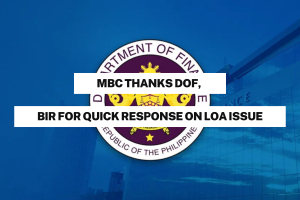
MBC Thanks DOF, BIR for Quick Response on LOA Issue
MBC thanks DOF, BIR for quick response on LOA issue 25 November 2025 – The Makati Business Club welcomes the Department of Finance’s guidance to

Joint Statement: Statement on the appointment of BIR Commissioner Martin Mendoza
Joint Statement Statement on the appointment of BIR Commissioner Martin Mendoza 17 November 2025 – We, the members of The Partnership with Multi-Sectoral Group (PMSG),


